Ford F-150 (1997-2020) firing order — diagram & guide
The essential guide to the Ford F-150 firing order.

Over the years, the F-150 became Ford’s staple model in the mid-size truck vehicle family. Out of all the F-Series trucks, this one is the most suitable for everyday needs and still packs some decent towing power. Well, that’s mostly thanks to the engine options which were pretty diverse.
Since most drivers tend to maintain the engine DIY way, we’ve made this guide on the Ford F-150 1997-2020 firing order. We’ll go over all the different engines and firing sequences and the specs related to the engine’s cylinder arrangement to help you get started.
| CAR MODEL YEAR | ENGINE | FIRING ORDER |
|---|---|---|
| 1997-2008 Ford F-150 (11th Gen) | 4.6L V8 | 1-3-7-2-6-5-4-8 |
| 5.4L V8 | 1-3-7-2-6-5-4-8 | |
| 2009-2014 Ford F-150 (12th Gen) | 3.5L EcoBoost | 1-4-2-5-3-6 |
| 3.7L V6 | 1-4-2-5-3-6 | |
| 5.0L V8 | 1-3-7-2-6-5-4-8 | |
| 2015-2020 Ford F-150 (13th Gen) | 2.7L EcoBoost | 1-4-2-5-3-6 |
| 3.0L V6 | 1-4-2-5-3-6 | |
| 3.3L V6 | 1-4-2-5-3-6 |
Eleventh-generation Ford F-150 (1997-2008) firing order
The eleventh generation of Ford’s F-Series trucks is the first one we’ll discuss in this guide since it was the first generation that was still available in the early 2000s. The model has several different engine options starting from V6 engines and all the way up to Triton V8s.
So, we’ll discuss all of these before we move on to more recent Ford F-150 models and their engines.
Ford F-150 4.6L firing order
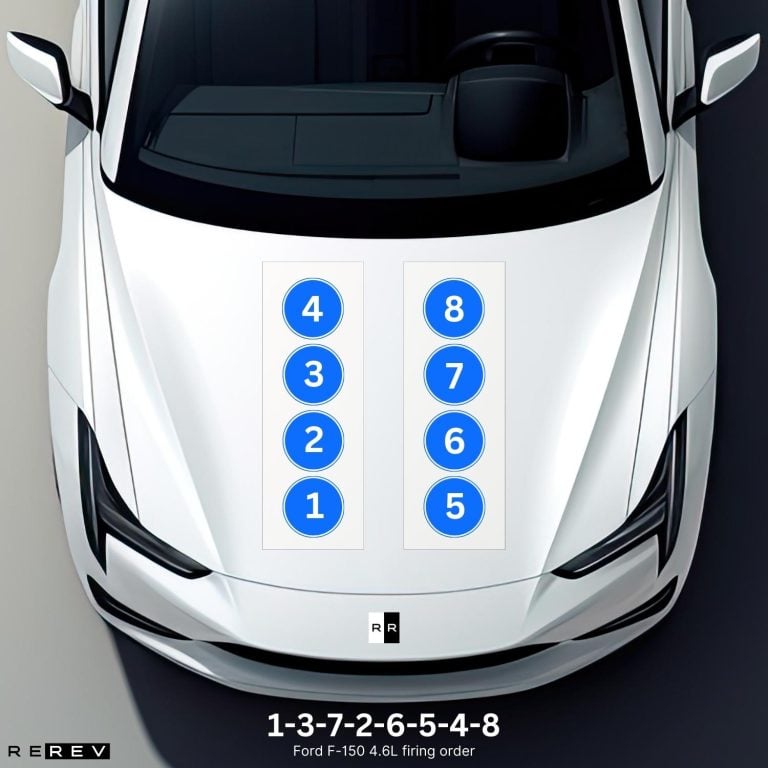
The first engine we’ll discuss is Ford’s 4.6-liter V8 which was used in the base version of the F-150 in this generation. The Ford F-150 firing order is 1-3-7-2-6-5-4-8 and it features the basic V8 cylinder configuration.
You’ll find cylinders 1, 2, 3, and 4 on the passenger’s side of the engine, and cylinders 5, 6, 7, and 8 on the driver’s side. The first cylinder is on the passenger’s side of the engine and it’s the lowest cylinder within the cylinder bank.
Ford F-150 5.4L firing order
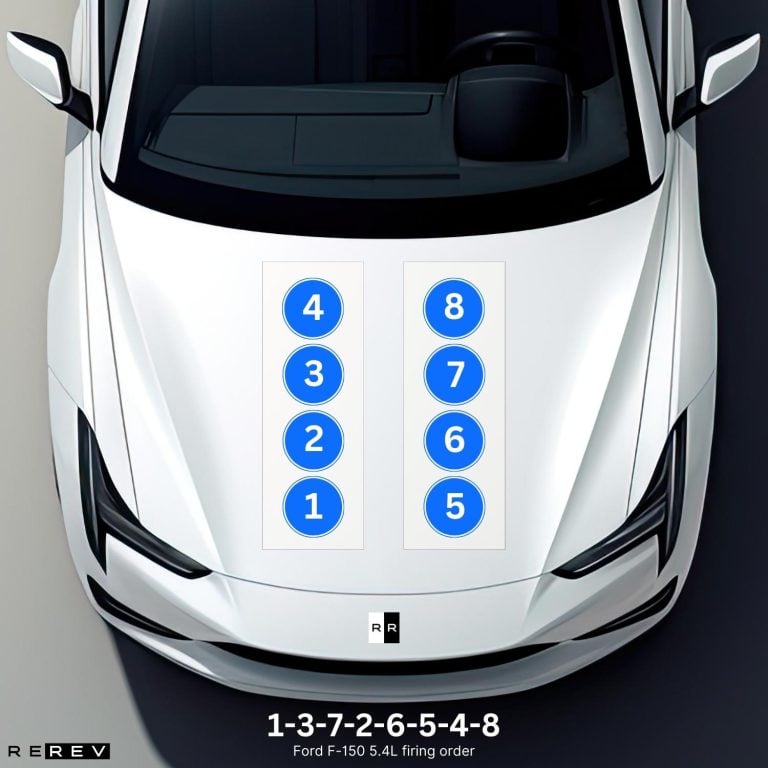
Moving on to the next engine option, we’ve got the 5.4-liter V8. The key point is – the Ford F-150 5.4L firing order is 1-3-7-2-6-5-4-8 and the cylinder layout is the same as for the 4.6-liter one.
So, looking from the outside of the vehicle, the left-side cylinders are 1, 2, 3, and 4, while the cylinders 5, 6, 7, and 8 are on the right side.
The 5.4-liter V8 engine also got a few updates over time since Ford increased the number of valves on each cylinder, so the F-150 ended up having a 24-valve version by the end of the eleventh-gen’s production.
Twelfth-generation F-150 (2009-2014) firing order
For the 12th gen of the F-150, Ford once again updated the engine palette, and this time there were many other options. Among these, we have to point out the addition of a few V6 options along with the turbocharged EcoBoost engine.
So, let’s take a moment to discuss each of the newly added options besides the 4.6-liter and the 5.4-liter ones we’ve already discussed.
Ford F-150 3.5L firing order
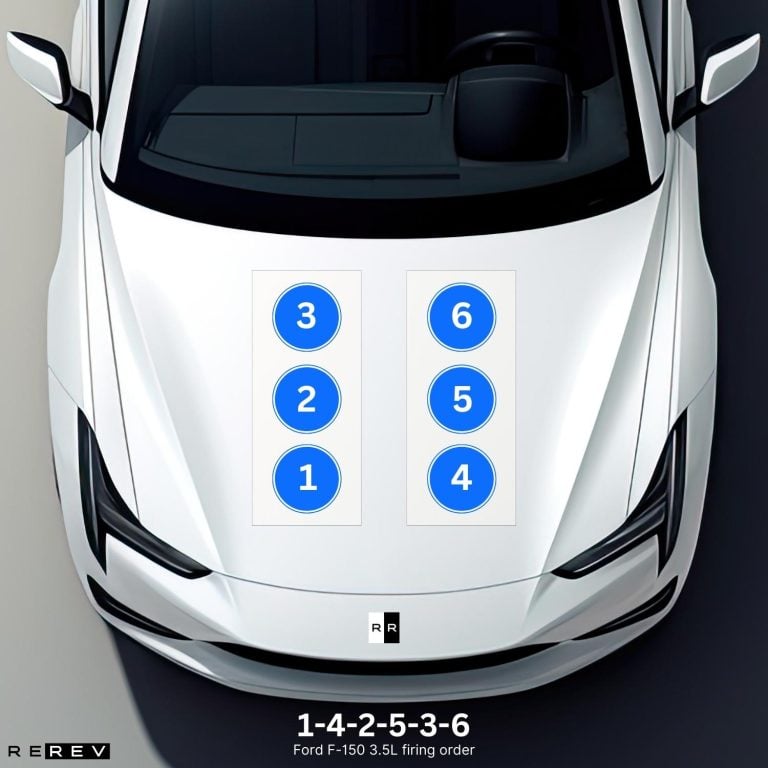
The 3.5-liter engine was added to the F-150 lineup as a final option in this generation model and it featured a turbocharger. In other words, it replaced the 4.6-liter engine that was wasting more fuel regardless of the size.
So, the Ford F-150 3.5L firing order is 1-4-2-5-3-6 and this one is pretty simple in terms of cylinder layout. The first cylinder can be found on the passenger’s side as the lowest cylinder in the bank. Cylinders 2 and 3 are also within this bank along with cylinders 4, 5, and 6 on the opposite side.
Ford F-150 3.7L firing order
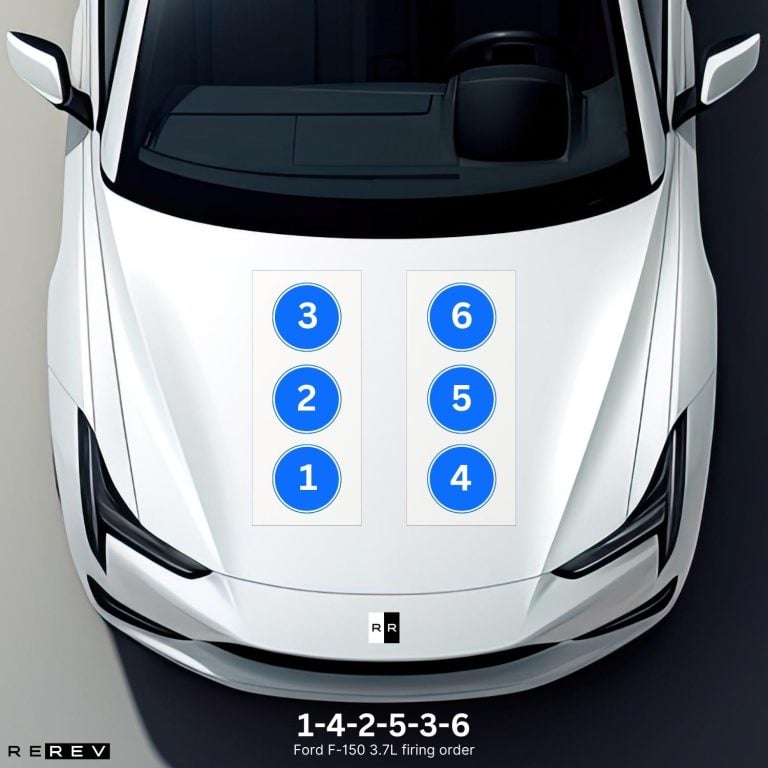
Along with the turbo engine, another V6 has been added to the F-150 lineup. The 3.7-liter engine is similar to the 3.5-liter turbo in terms of the firing order. The Ford F-150 3.5L firing order is 1-4-2-5-3-6 and the first cylinder is on the passenger’s side being the closest one to the radiator.
The engine’s cylinders are arranged from 1 to 3 on the passenger’s side and from 4 to 6 on the driver’s side, front to back.
Ford F-150 5.0L firing order
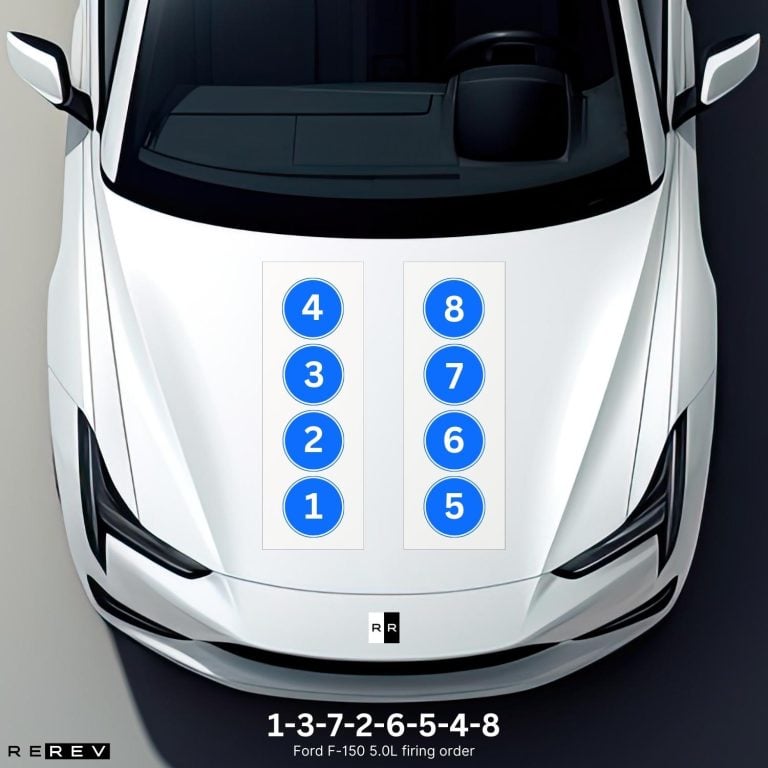
Along with these engines, the F-150 in the 12th generation also got the addition of a 5.0-liter Coyote V8. While it’s a Mustang engine primarily, the F-150 received a version of it, and the Ford F-150 5.0L firing order is 1-3-7-2-6-5-4-8.
The first cylinder is on the passenger’s side of the engine along with cylinders 2, 3, and 4. The driver’s side cylinders go from 5 to 8 front to rear. It’s important to note here that this version of the 5.0-liter engine is different than the regular Coyote in terms of the firing order.
Thirteenth-generation F-150 (2015-2020) firing order
With the thirteenth generation of the F-150, the model got renewed with a few new engines. These include the 2.7-liter turbo V6 along with the 3.3-liter base engine and a 3.0-liter diesel powertrain.
Ford F-150 2.7L firing order
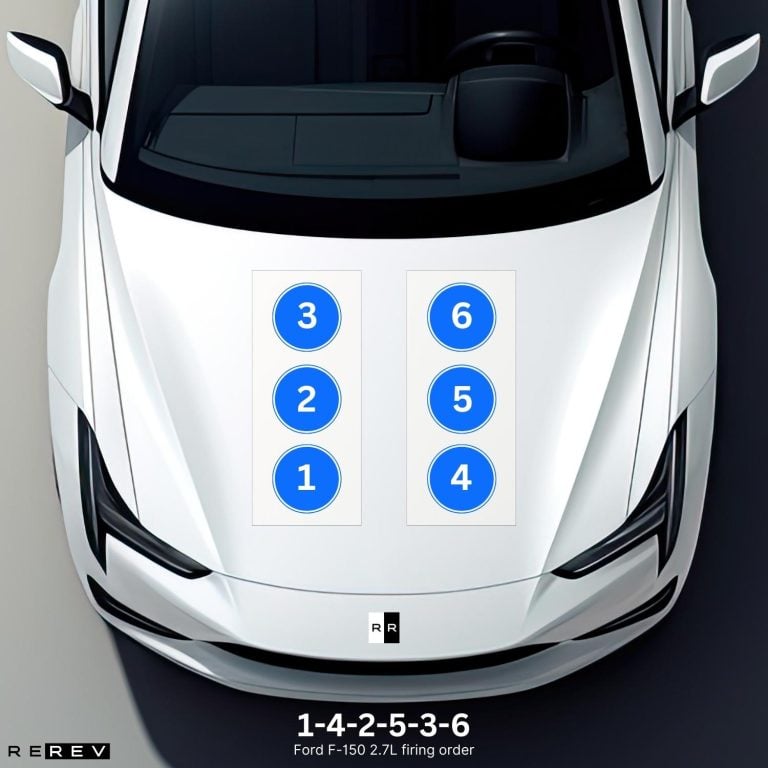
From the 2015 model year, the F-150 was updated with two versions of the 2.7-liter engine. It featured a regular turbo engine along with a twin-turbo V6, but both of these had the same firing order. So, the Ford F-150 2.7L firing order is 1-4-2-5-3-6.
The first cylinder is on the passenger’s side of hte engine along with cylinders 2 and 3. Cylinders 4, 5, and 6 are on the driver’s side of the engine.
Ford F-150 3.0 firing order
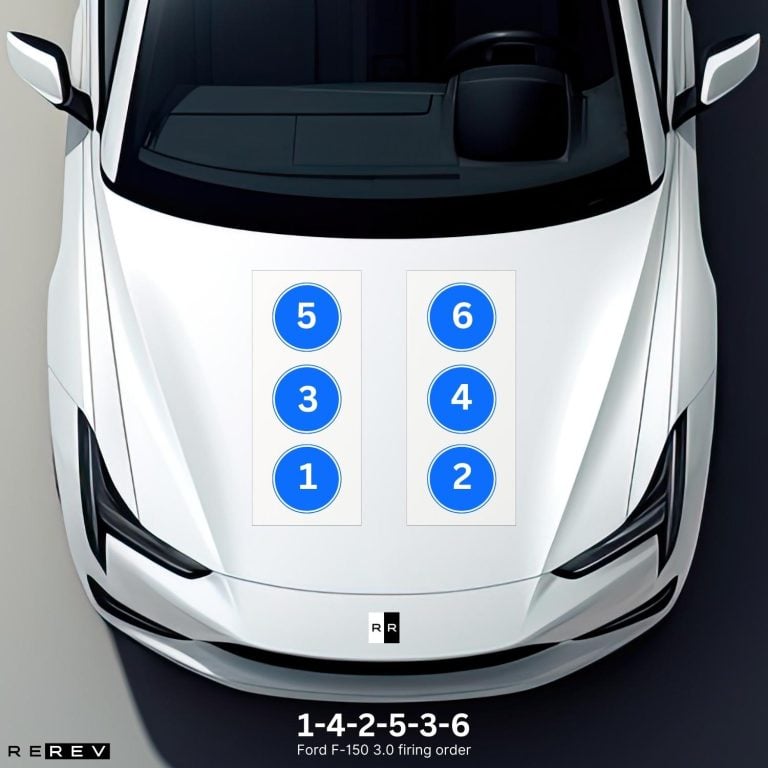
As for the diesel variant, the Ford F-150 3.0L firing order is 1-4-2-5-3-6, which is the same as the V6 options. However, the cylinder arrangement is different for this one, so the first cylinder is on the passenger’s side with cylinders 3 and 5.
Cylinders 2, 4, and 6 are on the driver’s side, so make sure to note the difference if you drive a diesel-powered F-150.
Ford F-150 3.3L firing order

As for the final extra option for the F-150 in the 13th generation model, we’ve got a 3.3-liter petrol V6. The Ford F-150 3.3L firing order is 1-4-2-5-3-6 which is the same pattern as for other V6 engines. It’s the latest Flex-fuel V6 version and the first cylinder of this one is at the passenger’s side as the lower-right cylinder.
Cylinders 2 and 3 follow right up on the same side toward the rear end of the engine, while the driver’s side cylinders go 4, 5, and 6 front to rear.
Our take
Ultimately, you should now be able to maintain your F-150’s engine and replace the spark plugs or ignition coils easily. It’s also convenient for diagnosing misfires and oil leaks, so we hope that you’ll be able to find all the information in this guide.